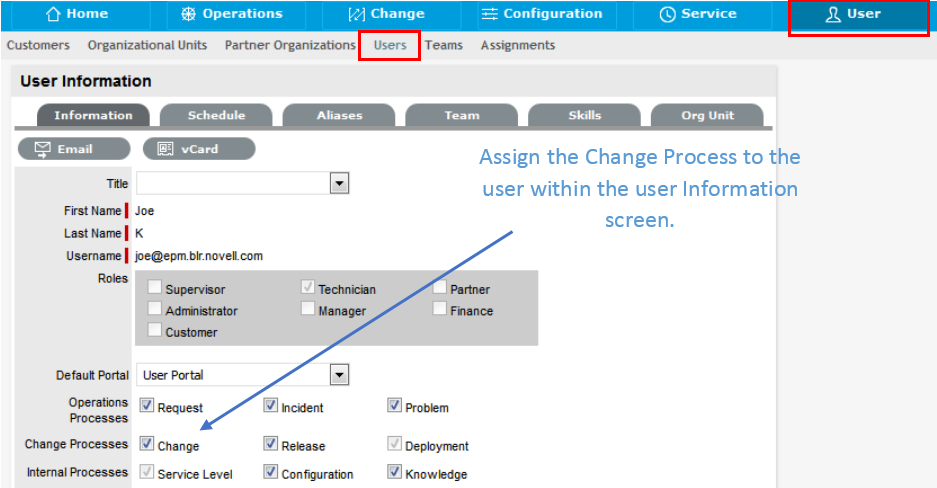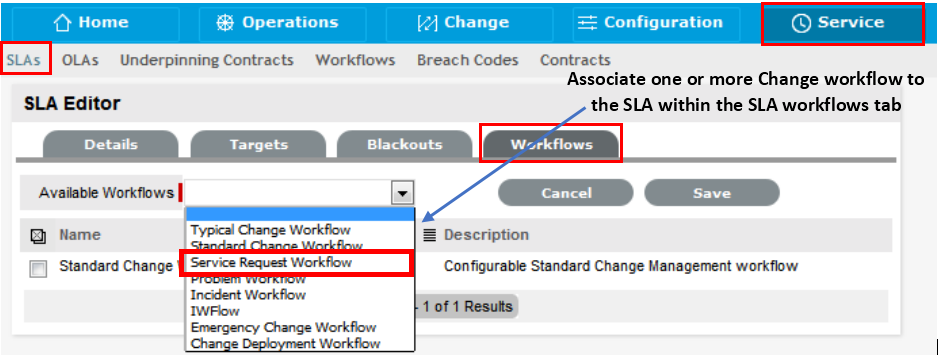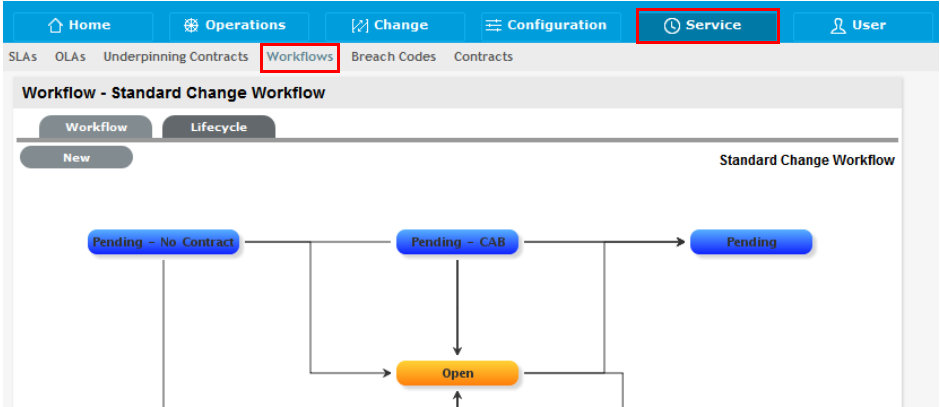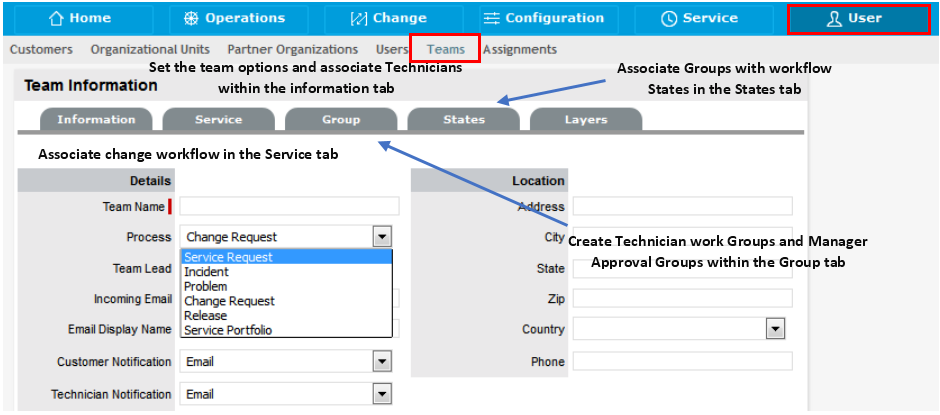1.52 Change Management
The goal of Change Management is to ensure that standardized procedures are used to efficiently handle all changes, and minimize the impact of any related Incidents upon a service. The Change Management process prevents unauthorized CMDB modifications and reduces disruption to Customers. It does this by coordinating the build, test and implementation of any change that impacts the CMDB.
Changes may arise reactively in response to Problems or externally imposed requirements, for example a new or changed regulatory situation. They may also be proactive, instigated by management to improve an organization’s efficiency and effectiveness, or to enable or reflect new service improvement initiatives.
The Change Advisory Board (CAB) is responsible for approving any Request for Change (RFC). This involves assessing the impact, resources and priority of the RFC. The CAB then advises the Change Manager of their assessment and assigns an appropriate Workflow.
Change Workflows within the system ensure that each RFC is handled with consistency, based on the risk and impact assessment of the CAB. Change Workflows define the actions required to correctly implement the change, and define the responsibilities, authorization and timescale expected to manage the change.
Once a Workflow is assigned to an RFC, it is routed to an appropriate Technician based on the Change Workflow State. After a Technician completes their assignment, the RFC is forwarded to the next Technician based on the next state of the Change Workflow.
When the RFC has progressed through all of the required Workflow States, a change review is undertaken to verify that the RFC has achieved its objectives. If the change objectives are not met, the RFC’s associated back-out procedure is implemented to rollback the change and restore the CMDB to a valid state.
As part of the Change Management Process, all requests related to a Change Request are automatically closed when the related RFC is closed. The system views the request hierarchy from low to high as Service Request, Incident, Problem and Change Request, and if a related request of a higher type is closed, all the lesser type requests are automatically closed.
1.52.1 Implementing Change Management
To set up the Change Management Process in the system, the following steps are to be completed:
-
Assign the Change Process to the relevant Users within the User Information screen under the User>Users tab. (See:Create a User.)

-
Create or review the SLA within the Service>SLAs tab, and associate the Incident Service Request Workflow to the SLA in the SLAs Workflow tab. (NB: The Supervisor User setting up the SLA must be assigned the Internal Process of Service Level in their User Information screen to complete this action.)

-
Review on or more Change Management Workflows within the Service>Workflows tab. (See: Change Management Workflows.)

-
Create a Change Management Team within the User>Teams screen. (See: Change Management Team.)

-
Associate the SLA to an Item or Customer or Org Unit. This final step ties all the elements together when a Change Request is created, as the SLA associated with the Item, Customer or Org Unit assigned to the Request determines the Workflow, Team and Technicians that are made available within the Service Request Information screen.